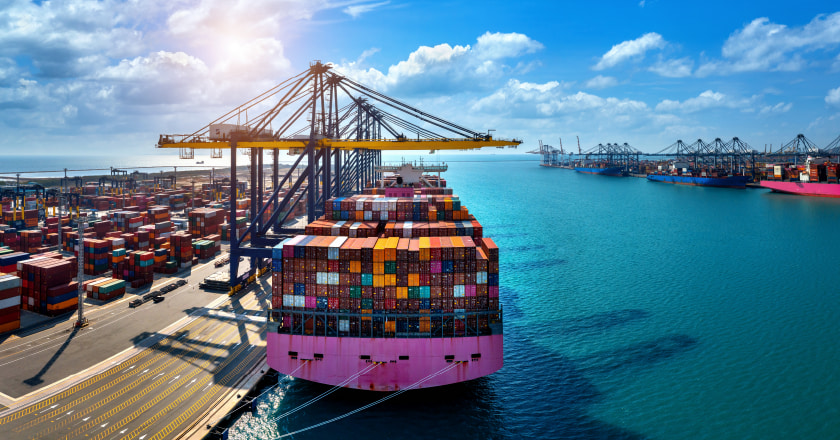
U.S. President Donald Trump’s announcement of a new wave of tariffs has triggered significant disruption across global supply chains. As a critical hub for the global tech industry, Taiwan is facing increasingly severe challenges. Core hardware components such as GPUs, CPUs, storage devices, and networking equipment are all at risk of being affected.
As nations race to develop AI applications, servers – the “brains” of AI hardware – have become even more strategically important. Adjustments in server tariffs not only influence overall hardware costs but also have far-reaching implications for production and deployment strategies across the global tech industry. The ongoing trade war is sending shockwaves through the foundation and future landscape of Taiwan’s technology sector.
Highlights:
- What Are Server Tariffs and How Do They Affect Taiwan?
- What Types of AI Hardware Are Affected by Tariffs?
- Shifts in AI Hardware Procurement Around the World
- How Taiwanese Companies Are Responding to Changes in AI Server Tariffs
- Tariff Impacts and Future Trends in AI Hardware
- How eASPNet Can Help Businesses Win the Tariff War
What Are Server Tariffs and How Do They Affect Taiwan?
- Server Import/Export Tariff Rules
“Server tariffs” refers to the taxes that countries impose on imported server products. Under the World Trade Organization’s Information Technology Agreement (ITA), most IT products – including servers – should enjoy zero tariffs. However, due to disputes over product classifications and geopolitical tension, some high-value equipment may still face additional tariffs or export restrictions. For example, since 2018, the U.S. has invoked Section 301 of the Trade Act of 1974 to impose retaliatory tariffs on servers imported from China. These measures have since expanded to cover even more tech products, with further tariff increases scheduled for 2025, creating significant financial barriers for the global supply chain.
- Impact of the U.S.–China Tariff War on Servers
In April 2025, the U.S. announced increased tariffs on Chinese imports, with rates for some high-tech goods soaring to as much as 145%. Although servers were not explicitly named, the announcement has already triggered ripple effects across global supply chains. According to wallstreet.cn, transportation orders for goods from China to the U.S. dropped by over 30%, leading to port congestion and export companies adopting a wait-and-see approach as they await clearer policies.
Facing the burden of higher tariffs, multinational corporations have accelerated the relocation of AI hardware and server production to Vietnam, India, and Mexico. The global supply chain is undergoing significant restructuring. TrendForce reports that the projected annual growth rate for global AI server shipments in 2025 has been revised downward from 28.3% to 24.5%. If supply chain challenges persist, further reductions are likely.
- Effects on Taiwan’s Tech Industry
As a key player in the global server supply chain, Taiwan has long provided high-end server design and manufacturing services for major U.S. brands. With global supply chains being reshaped, Taiwanese companies are increasingly affected, especially as many still rely on Chinese assembly and components – exposing them to indirect tariff risks.
To adapt, Taiwanese companies must swiftly adjust their logistics processes, certification standards, and production priorities. Reports indicate that firms like Quanta, Wistron, and Inventec are accelerating their plans to set up manufacturing bases in Southeast Asia and the Americas. At the same time, Taiwan is advocating for the modularization of AI servers and the enhancement of proprietary design and technological capabilities.

What Types of AI Hardware Are Affected by Tariffs?
The U.S. tariff policies impact not only servers but also various types of AI hardware:
Types of AI Hardware:
1. GPU (Graphics Processing Unit)
- Use: Primarily for deep learning and neural network computation, enabling large-scale matrix operations.
- Features: Highly parallel processing, ideal for training large AI models.
- Tariff Impact: Increased costs for AI model training, data analytics, and multimedia processing.
2. TPU (Tensor Processing Unit)
- Use: Specifically designed to accelerate machine learning tasks, especially deep learning.
- Features: Developed by Google, optimized for tensor operations, offering higher performance and lower power consumption.
- Tariff Impact: Higher costs for efficient AI training and cloud AI services.
3. AI Server
- Use: Equipped with multiple high-performance computing chips, supporting large-scale AI model training and inference.
- Features: Typically packed with multiple GPUs or TPUs, offering massive computing power and storage.
- Tariff Impact: Increased costs for data centers, enterprise AI computing, and cloud platform infrastructure.
4. ASIC (Application-Specific Integrated Circuit)
- Use: Hardware tailored for specific AI applications, such as algorithm acceleration.
- Features: High performance and low power usage, but less flexible.
- Tariff Impact: Higher costs for IoT devices and edge computing.
5. FPGA (Field-Programmable Gate Array)
- Use: Reconfigurable hardware is used to accelerate AI inference and training.
- Features: Highly flexible, can be tailored to specific tasks, but complex to program.
- Tariff Impact: Affects costs in embedded systems and industrial automation.
6. NPU (Neural Processing Unit)
- Use: Designed specifically to accelerate neural network computations.
- Features: High efficiency and low power usage, suitable for embedded AI.
- Tariff Impact: Increases production costs for smartphones, IoT, and edge AI devices.
7. Edge AI Devices
- Use: Perform AI computing and inference locally, reducing reliance on the cloud.
- Features: Low latency, higher privacy, and low power consumption.
- Tariff Impact: Impacts costs in smart home, autonomous driving, industrial automation, and healthcare.
Shifts in AI Hardware Procurement Around the World
China:
Relocating production lines to Vietnam and India, strengthening cooperation with new markets and supply chains, and developing homegrown AI chips like Huawei’s Ascend 910C.
India:
A top destination for production relocation. In April 2025, the Indian government announced a $4 billion Design Linked Incentive (DLI) scheme to attract foreign investment and boost local electronic design capabilities.
South Korea:
Plans to invest ₩9.4 trillion (NT$224 billion) by 2027 to develop AI hardware and software. Companies like Samsung and SK Hynix are expanding production and driving innovation to reduce reliance on U.S. tariff-sensitive markets.
Japan:
The Ministry of Economy, Trade and Industry will provide up to ¥802.5 billion (NT$179.1 billion) in subsidies to the chip startup Rapidus for AI hardware R&D. Japan is also partnering with the U.S. to co-develop 2nm semiconductor production technologies.
How Taiwanese Companies Are Responding to Changes in AI Server Tariffs
- Technological Innovation and Cost Control
Taiwanese AI server manufacturers such as Foxconn, Quanta, Wistron, and Inventec are actively enhancing R&D capabilities to boost product competitiveness. At the same time, they are optimizing production processes to reduce costs. Given the high-performance and high-cost nature of AI servers, these companies are striving for greater operational efficiency. - Taking Advantage of the Tariff Grace Period to Accelerate Shipments
The U.S. has announced a temporary reduction of tariffs from 32% to 10% for multiple countries, including Taiwan, with a 90-day grace period ending on July 8, 2025. Most Taiwanese companies are expediting shipments during this window to reduce tax burdens. - Utilizing Government Subsidy Programs
Taiwan’s Executive Yuan has approved the “Support Program for Taiwanese Export Supply Chains in Response to U.S. Tariffs,” with a total budget of NT$93 billion. The program includes financial support, R&D transformation subsidies, market expansion incentives, and tax benefits to help businesses enhance their resilience and international competitiveness. - Adjusting Supply Chains and Production Layouts
To mitigate risks, some Taiwanese companies are considering relocating production lines to countries like Vietnam and India. They are also actively seeking partnerships with other nations to expand into emerging markets and diversify supply chains, thereby reducing dependency on any single market. - Accelerating U.S. Factory Investments
Major Taiwanese AI server manufacturers are evaluating opportunities in the U.S. market. According to news reports, Foxconn plans to invest approximately USD 900 million to build an AI server assembly plant in Texas, which is expected to be operational in early 2026. Compal and Inventec are also actively considering U.S. expansions to reduce reliance on Chinese and Mexican manufacturing bases.

Tariff Impacts and Future Trends in AI Hardware
- Market Diversification and Localized Supply Chains
Facing tariff pressures and geopolitical risks, companies are reducing their dependency on single markets, particularly the U.S., by expanding into Southeast Asia, the Middle East, and Europe. Strengthening the presence of local supply chains has become a key strategy to avoid trade friction. “Manufacture locally, sell locally” is the emerging approach. - Increased Supply Chain Regionalization
Some server manufacturers are shifting toward U.S.-based and Mexico-adjacent assembly and supply networks to reduce tariff and geopolitical exposure. Asian production is increasingly distributed across countries like Vietnam and India, creating a “dual supply chain” model. - Continued Strong Demand for High-End AI Hardware
Companies are investing more in high-performance, energy-efficient designs. This drives AI hardware toward higher performance, customization, and miniaturization, enhancing value and offsetting cost pressures.
How eASPNet Can Help Businesses Win the Tariff War
In response to rising server tariffs, supply chain restructuring, and surging AI hardware demand, GWS CLOUD plays a pivotal role in strengthening operational resilience and accelerating digital transformation for Taiwanese businesses.
Firstly, amid global supply chain regionalization and market diversification, GWS CLOUD supports enterprises with locally deployed data centers and a robust domestic supply chain. This helps avoid international tariffs and logistics risks while ensuring stable cloud resource availability and reducing cost uncertainty.
Secondly, with the rising demand for advanced AI hardware, GWS CLOUD provides a one-stop platform – GWS AI Cloud – offering on-demand GPU rentals, training platform deployment, and AI consulting services. This allows businesses to adopt AI applications flexibly and cost-effectively, accelerating innovation and transformation.
Moreover, GWS CLOUD ensures data security with 24/7 technical support and multiple international security certifications. This enhances protection across multi-cloud and hybrid cloud architectures, meeting both risk mitigation and compliance requirements.
In summary, GWS CLOUD not only helps businesses adapt to changes in hardware and cloud costs but also provides a resilient and agile infrastructure, making it the ideal partner for steady growth amid global market uncertainty.
- Learn More: GWS AI Cloud
- Customer Service Contacts: Live Chat Support





